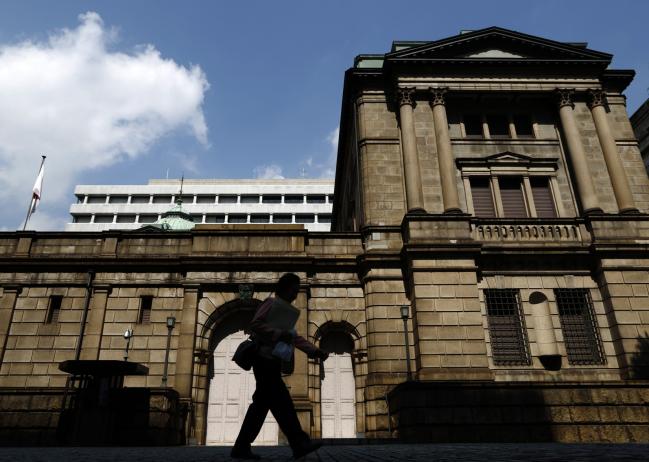(Bloomberg) -- Japan’s key inflation gauge ticked up in February, putting the Bank of Japan halfway to its goal of 2 percent. Yet a strengthening yen and the threat of a global trade war underscore the central bank’s vulnerability to global markets and events.
Despite the progress made, inflation remains far from the BOJ’s target, while the yen’s 7 percent gain so far this year has raised the risk of price gains stalling. Even a modest decline in oil prices would work against the central bank, which blamed a price collapse in 2014 for its struggles to generate inflation.
BOJ Governor Haruhiko Kuroda has faced questions about when the central bank will begin normalizing its monetary policy, given a growing economy and moderately rising inflation. He underscored this month that “powerful” easing will continue, even as his global peers continue to tighten policy.
"The BOJ has no choice but to patiently continue easing," said Masayuki Kichikawa, chief macro strategist at Sumitomo Mitsui Asset Management Co.
After stripping out external factors such as the exchange rate and oil prices, there is no confirmed inflationary trend in Japan, Goldman Sachs (NYSE:GS) economist Tomohiro Ota wrote in a research report this week. If crude oil prices and the yen stabilize around current rates, core CPI will likely decelerate well below 1 percent from mid-year, Ota said.
"What’s creating headaches at the BOJ is the yen," said Nobuyasu Atago, chief economist at Okasan Securities Co. and former head of BOJ’s price-statistics division, who said core inflation could sag in the second quarter because of weaker contributions from the exchange rate and oil prices. "I think it’s too early to be optimistic."
To be sure, there are signs of progress in Japan’s real economy. It has expanded for eight straight quarters, and wages and domestic consumption have improved as the unemployment rate hit a 25-year low.
|
What our economists says ... "A continued pickup in Japan’s inflation in February reflects building pressures from the positive output gap," Bloomberg Economics’ Yuki Masujima wrote. "A headwind from yen strength, though, is likely to impede progress, keeping the core gauge around 1 percent year on year into 3Q." |
Japan’s recovery has largely been fueled by external demand for its products at a time of increasingly synchronized global growth. The risk is that protectionism escalates further.
"If the targeted goods widen to other products like cars, the significance of this for Japan’s economy would go up to a totally different level," said Junko Nishioka, chief economist at Sumitomo Mitsui Banking Corp. and a former BOJ official.
Trade Threat
Sumitomo Mitsui’s Kichikawa said the current estimate is for global trade to shrink enough to trim as much as 0.5 percentage point off of Japan’s real gross domestic product. "That’s not small for a nation with a potential growth rate of around 1 percent so we’ll have to watch carefully."
To be sure, there is a chance that trade tensions don’t escalate and that the dollar rebounds against the yen. That would relieve some pressure on the BOJ, which has faced its share of skeptics all along.
Although many see inflation slowing later this year, it should be noted a lot of economists thought core inflation wouldn’t even hit 1 percent. In a survey conducted by Bloomberg last summer, the median forecast was for core inflation to top out at 0.8 percent in the fourth quarter of 2017.
"It’s true it’s been a little bit better than the market consensus,” Atago said.
Data Highlights
- Consumer prices, excluding fresh food, rose 1 percent in February from a year earlier (estimate 1 percent).
- Stripping out fresh food and energy, prices climbed 0.5 percent (estimate 0.5 percent).
- Overall prices gained 1.5 percent (estimate 1.5 percent)
(Adds economists’ comments on underlying inflation, outlook for BOJ.)
